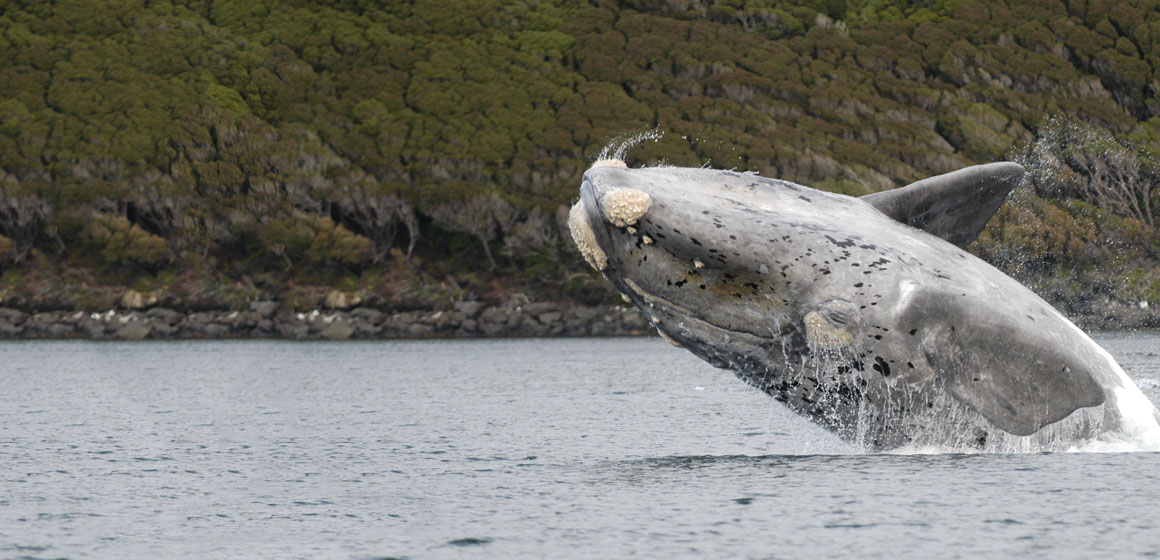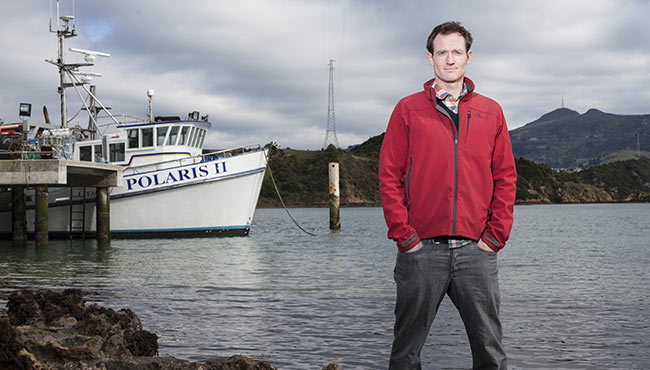 Monday 23 February 2015 1:03pm
Monday 23 February 2015 1:03pmSouthern right whales, once hunted to commercial extinction, are re-colonising New Zealand.

Dr Will Rayment
After years of research, Marine Science's Dr Will Rayment and his colleagues have confirmed what they had been hoping for – the whales are returning to areas where they once flourished and numbers are increasing.
“Now we're working on identifying ideal habitats for breeding and calving. If we can mitigate any potential negative human impact in likely places, we may be able to encourage the whales' return,” says Rayment.
Photo-ID and DNA analyses have proved that the whales seen around New Zealand are the same population as those found in the sub-Antarctic islands and that there is significant travel between the two areas.
After decades of no sightings and fears that the southern rights were likely to die out, a healthy remnant population was discovered in the Auckland Islands, breeding each winter in Port Ross.
The latest estimates suggest that numbers have doubled from about 900 in 1998 to about 2,000 today. “It seems the population is growing at about six to eight per cent a year, which means it is self-sustaining and no longer at risk of extinction. Having whales returning to New Zealand to calve is very exciting. This is a good news story, which is all the more rewarding because that's so rare these days.”
Recent research included the first systematic survey of the whales' preferred habitat around the Auckland Islands, showing that there were several consistent factors involved in where they chose to gather.
“We now have some good clues as to what kinds of locations they prefer and these will be useful to help us predict places that the whales may show an interest in around New Zealand."
“Mothers are very selective about where they give birth and they regularly return to the same places. But occasionally they'll seek out new areas with similar characteristics and that appears to be what's happening in mainland New Zealand waters.”
Rayment is keen to see a systematic study around our coasts to find out which whales are where. So far, much of the information confirming the return of the southern rights has been based on opportunistic sightings.
“We're confident the whales are coming back, but non-systematic data sometime throws up anomalies, so we want to get past that.”
Although the majority of sightings have been around the South Island, more mother-calf pairs have been seen around the North Island, which doesn't tie in with expectations.
“We're not sure if that's because there are more people looking out for the whales in the north, but we would have thought there would have been more in the south. We do need to run a scientific survey and quantify the numbers.”
Although the whales are likely to return to the same kinds of areas they were found in by whalers a century ago, some historical sites may never be re-colonised.
“We don't expect them to return to all the same places they were before they were hunted almost to extinction, because many of the places are not the same. For example, Otago Harbour has probably changed since the 1830s, with deposited sediment from deforestation and noise from shipping creating a very different acoustic environment.
“But after our latest research on current preferred sites in the Auckland Islands we hope to be able to identify likely future destinations around New Zealand. Isolated spots in coastal Southland are still fairly unchanged, so whales could well gather there again.”
The next step will be to see if potential gathering spots for breeding and socialising can be improved by predicting and, hopefully, limiting potential impacts on visiting whales.
Rayment and colleagues are also researching the spatial ecology of many other marine creatures around New Zealand's coasts, from small scallops to huge sperm whales, including trying to understand more of the many reasons why the Kaikoura coast is such an attraction for marine life.
Funding
- Foundation for Research, Science and Technology
- University of Otago
- New Zealand Whale and Dolphin Trust
- Otago Museum